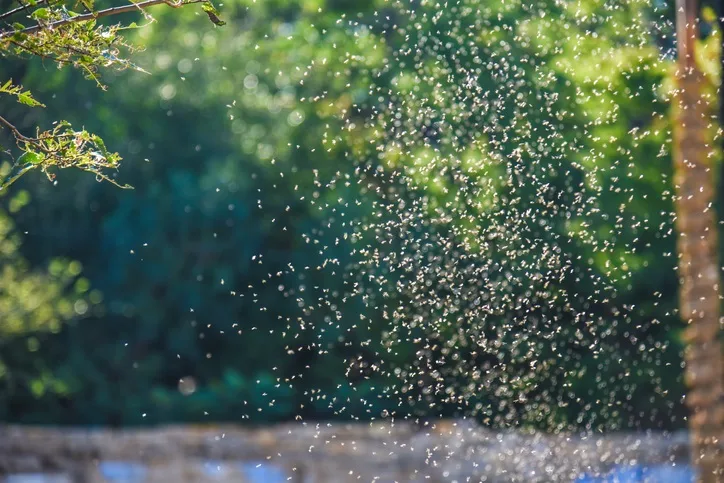
Here's why you may be seeing tiny swarms of insects
Insect swarms plague many Canadians right now. Here's why
They're back.
Midges -- also known as chironomids or lake flies -- are tiny, non-biting bugs that swarm together and, depending on where you live, you may have seen a lot of them lately.
If you've had to navigate these swarms on your socially-distant walks, you aren't alone. We've received dozens of photos of midges from our viewers, prompting us to reach out to an expert to learn more.
According to Royal Ontario Museum entomologist Doug Currie, the bugs can be seen throughout the year but they're most noticeable when there are mass emergences of adults, which is most common in the spring and fall.
A midge is less than 1 millmetre long and nearly invisible when on its own or when observed from afar. But there's power in numbers, which is exactly what you'll see when a swarm gathers. Some of them are a few thousand strong, while others can number into the millions.
The insects feed on plants and hatch in water and the sunlight draws them out.
Currie says there are hundreds of species of midges in Canada, and each has a unique life cycle.
"The ones that are creating the big swarms in southern Ontario [currently] are likely originating from the large lakes, like Lake Ontario and Lake Simcoe," he tells The Weather Network via email.
Unfortunately, there isn't much you can do to avoid midges -- but you can reduce the number of them that congregate on your property by turning off your porch lights.
VIDEO: MIDGES SWARM LAKE SIMCOE
WHAT'S THE DEAL WITH THE SWARMS?
Many swarms are related to mating, and they're usually comprised of males that are looking to attract females.
"Swarms typically form in the proximity of some kind of visual marker, which could be a large boulder, a bush a tree or anything, really," Currie says.
"Females fly into such swarms to become mated. Swarms of this nature are likely to be observed during the period dawn till dusk. Swarms at night are likely the result of adults being attracted to lights. The large swarms we’re seeing now are part of the annual life cycle of particular lake-dwelling species of midge, which should soon dissipate given the relatively short life-span of adult midges."
The next swarm will likely appear around the fall.
While they may be annoying, rest assured -- they won't be around for much longer. And while they're here, midges act as an important food source for aquatic life, waterfowl, invertebrate, birds, bats, and insects.
